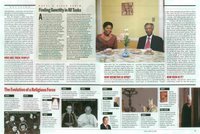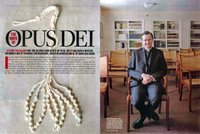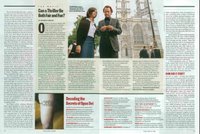The Land of Wind Towers
 You have seen them at the Creek, on over-sized villas in Satwa, in the 3-d generated renderings of multi-billion dirhams community projects and prominently at the Madinat Jumeirah. Almost all architects and builders are busy associating these mostly brownish, sometimes rugged and rarely functional vertical openings with some rods sticking out, to the architectural and cultural heritage of Dubai.
You have seen them at the Creek, on over-sized villas in Satwa, in the 3-d generated renderings of multi-billion dirhams community projects and prominently at the Madinat Jumeirah. Almost all architects and builders are busy associating these mostly brownish, sometimes rugged and rarely functional vertical openings with some rods sticking out, to the architectural and cultural heritage of Dubai. So I decided to find out a little more about the most ancient form of air-conditioning and its origin. Early in the 18th century, with the new found wealth out of pearl trade in countries like Bahrain, merchants built houses bringing with them some respective regional architectural aspects. One of the such features was the 'baghdeer' or a natural ventilation system. The hawaya is one of the three types of baghdeer, says Catnaps.org, an excellent resource in Islamic architecture. The Burj Al Hawwa or the Wind Towers we refer to today, was meant to take advantage of the prevailing winds allowing the air to funnel into the interiors. The mangrove poles which were often sticking out of the structure provided the much needed tensile strength.
So I decided to find out a little more about the most ancient form of air-conditioning and its origin. Early in the 18th century, with the new found wealth out of pearl trade in countries like Bahrain, merchants built houses bringing with them some respective regional architectural aspects. One of the such features was the 'baghdeer' or a natural ventilation system. The hawaya is one of the three types of baghdeer, says Catnaps.org, an excellent resource in Islamic architecture. The Burj Al Hawwa or the Wind Towers we refer to today, was meant to take advantage of the prevailing winds allowing the air to funnel into the interiors. The mangrove poles which were often sticking out of the structure provided the much needed tensile strength.The easy accessibility and availability in the region has rendered this cumbersome natural air cooling system useless over the years. But the revival of these wind towers came from an unlikely place, where people have been exhibiting the Burj Al Hawwa merely as a decorative element; the mangrove poles replaced by concrete rods painted a darker shade of brown.
Illustration courtesy : www.catnaps.org




































